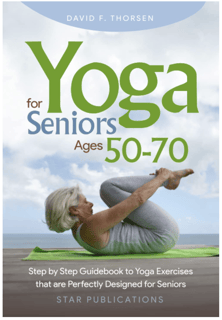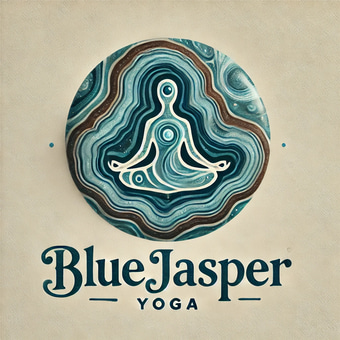Never Too Late: 10 Easy Yoga Poses for Seniors to Gain Mobility and Maintain Flexibility


Introduction to Yoga for Seniors
Yoga is a practice that transcends age, offering numerous benefits for seniors who seek to improve their physical and mental well-being. It is a common misconception that yoga is reserved for the young and fit; however, it is never too late to embark on this journey of mindfulness and movement. In fact, incorporating yoga into one’s routine can be a powerful tool for seniors looking to enhance their mobility and overall health.
One of the primary advantages of practicing yoga for seniors is the promotion of longevity. Regular participation in yoga can lead to increased flexibility, which is essential as the body ages. Enhanced flexibility not only aids in day-to-day activities but also contributes to greater balance and prevention of falls—an important consideration in maintaining a high quality of life. Additionally, yoga practices often include poses that strengthen key muscle groups, further fortifying the body against the common ailments associated with aging.
Yoga also presents psychological benefits that are particularly relevant for seniors. Engaging in yoga can induce a state of relaxation, facilitating stress relief and improved mental clarity. By focusing on the alignment of the body and the breath, individuals can cultivate a sense of mindfulness that may help reduce anxiety and elevate overall mood. This mental engagement is essential in promoting emotional well-being and can combat feelings of loneliness that sometimes accompany aging.
In summary, the incorporation of yoga into the lives of seniors is a beneficial endeavor that supports both physical and psychological health. By fostering greater agility and flexibility while also nurturing the mind, yoga serves as a holistic approach to maintaining a fulfilling and vibrant life. Embracing this practice is a valuable investment in one’s health, regardless of age or experience level.
Essential Safety Tips for Seniors Practicing Yoga
Practicing yoga can be immensely beneficial for seniors, enhancing flexibility and promoting overall well-being. However, safety should be a paramount consideration for older adults embarking on this physical journey. Prior to starting any yoga practice, it is advisable for seniors to consult with their healthcare provider. This precaution ensures that any pre-existing conditions or concerns are addressed, allowing for personalization of the yoga practice to suit individual health needs.
The next crucial aspect is the choice of environment. Seniors should seek a calm and comfortable space that is free from distractions. A non-slip mat is essential to prevent falls and provide stability during poses. The practice area should also be well-lit, allowing for better visibility of surroundings. Furthermore, ensuring access to proper props can enhance safety in yoga. Using blocks, straps, or bolsters can provide additional support, thereby enabling seniors to maintain proper alignment and prevent strain while attempting different poses.
Body awareness plays a vital role in the practice of yoga. Seniors are encouraged to listen to their bodies and recognize their limits—with focus on modifying or skipping poses that feel uncomfortable. It is essential to start slowly, gradually increasing the duration and intensity of the practice as comfort and capability grow. Engaging in gentle stretches and foundational poses initially helps build confidence and strength, paving the way for a more advanced practice over time.
In conclusion, embracing yoga can significantly contribute to the agility and flexibility of seniors, as long as safety remains a priority. By taking necessary precautions, seniors can enjoy a rewarding yoga practice that is both safe and beneficial.
Top 10 Easy Yoga Poses for Agility and Flexibility
Yoga offers an excellent approach for seniors seeking to enhance their agility and flexibility. Here are ten easy yoga poses that are particularly beneficial for older adults, accompanied by descriptions, benefits, and step-by-step instructions to ensure safe practice.
1. Mountain Pose (Tadasana): Stand tall with your feet together, arms at your sides. Distribute your weight evenly across both feet and breathe deeply. This pose improves posture and strengthens leg muscles.
2. Cat-Cow Stretch (Marjaryasana-Bitilasana): Start on all fours. Use pillows under knees, if necessary. Inhale, arch your back (cow), and exhale, rounding your spine (cat). Repeat this flow for a gentle spinal massage, improving overall flexibility. You can also try this pose standing. Inhale and reach arms forward, rounding your upper back and look down. Then place your arms down by your side, exhale and reach back while rolling your shoulders back and look up. Repeat this flow.
3. Forward Bend (Uttanasana): Stand with feet hip-width apart and bend forward from the hips, letting your head hang heavy. This pose stretches the hamstrings and calves while calming the mind.
4. Chair Pose (Utkatasana): Stand with feet together, bend your knees, and lower your hips as if sitting in a chair. Raise your arms overhead. This strengthens the thighs and improves balance. You may also actually sit in a chair as you lower your hips. Then simply stand and repeat flow.
5. Seated Forward Bend (Paschimottanasana): Sit with legs extended in front and bend forward from the hips. Grasp your feet and hold. This pose enhances hamstring flexibility and promotes relaxation.
6. Tree Pose (Vrksasana): Stand on one leg, placing the opposite foot on your inner thigh or calf. Bring your arms overhead. This pose enhances balance and concentration. If you need assistance for balance, stand near a wall or chair and hold with one hand.
7. Child’s Pose (Balasana): Kneel and sit back on your heels, stretching your arms forward on the mat. This restorative pose alleviates tension and promotes a sense of calm. You can also try this pose in bed, morning or evening. It is a wonderful stretch for the entire body.
8. Warrior II (Virabhadrasana II): Stand with feet wide, turn one foot out, and bend that knee while extending arms to the sides. This pose builds strength and confidence.
9. Bridge Pose (Setu Bandhasana): Lie on your back with feet flat and knees bent. Lift your hips while squeezing your shoulder blades together. This pose strengthens the back and improves flexibility.
10. Corpse Pose (Savasana): Lie flat on your back, allowing your body to relax completely. Focus on your breath. This ending pose promotes full-body relaxation and mental clarity. Another perfect pose to try in bed before sleep.
For visual learners, instructional videos or the great book below may enhance your understanding of these poses. Always consult with a healthcare provider before beginning any new exercise regimen, particularly if you have existing health concerns.
Available in Paperback or Kindle
Creating a Sustainable Yoga Routine
Establishing a sustainable yoga routine is essential for seniors aiming to enhance their agility and flexibility. The practice should be tailored to fit individual lifestyles and abilities, ensuring that it remains enjoyable rather than burdensome. It is generally recommended that seniors practice yoga at least two to three times a week. Regular practice can lead to significant improvements in flexibility, strength, and balance, all of which are crucial for maintaining overall well-being.
Incorporating different yoga poses into the routine can keep the practice engaging. A diverse selection can prevent monotony and provide varied physical benefits. For instance, seniors can start with gentle poses that promote flexibility, such as the Cat-Cow stretch or the Seated Forward Bend. As they build confidence, they may gradually introduce poses that challenge their balance, like the Tree pose or Warrior II. It is important to listen to one's body and adapt poses to fit personal comfort levels, using props like blocks or straps for added support.
Consistency is particularly crucial in any yoga practice. Creating a designated time for yoga—whether in the morning, afternoon, or evening—can foster a habit. Setting achievable goals, such as mastering a new pose each month or increasing flexibility in a specific area, keeps motivation high and encourages a continued commitment to the practice. Tracking progress in a journal or using yoga apps can also provide visual encouragement to maintain this routine.
In addition to solo practice, engaging in community yoga classes can provide both social interaction and a sense of accountability. Local senior centers, gyms, or yoga studios often offer specialized classes tailored to seniors. Alternatively, online resources and virtual classes can be suitable for those preferring to practice in the comfort of their homes. Overall, the key to a successful yoga journey lies in integrating the practice seamlessly into daily life, thereby creating a sustainable path towards increased agility and flexibility.


